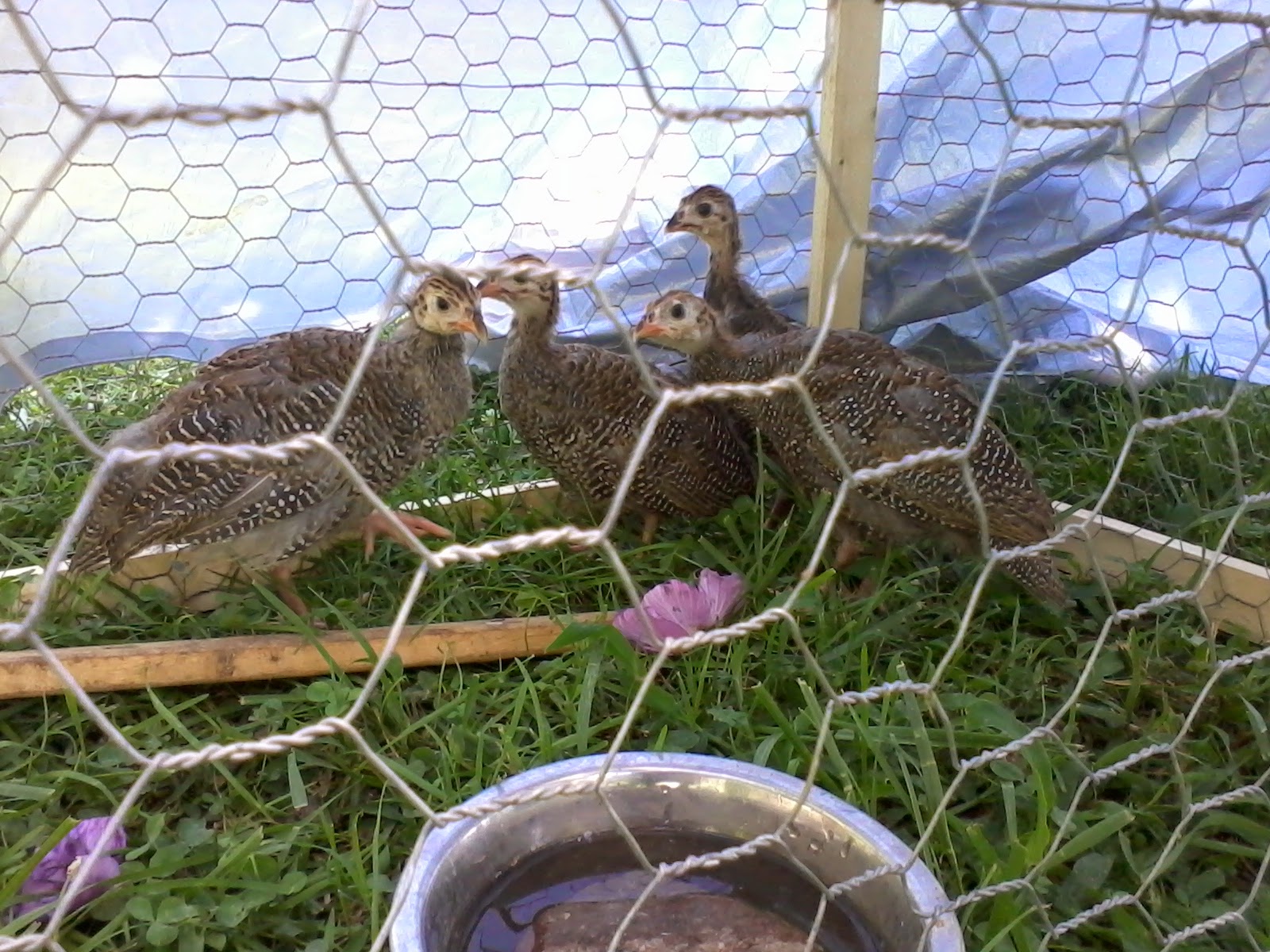It was actually a relatively simple process. I led Tarcy out into the front pasture and held the lead rope while the vet gave him two injections. The first calmed him down so that she could lasso him with a rope, and the second put him to sleep. We helped him to fall gently to the ground using the lasso, and then the vet got to work.
 |
| Tarcy laid out in the pasture. His leg was tied back just in case he kicked. |
 |
| The vet said the "crunch" is a sound men don't like! |
 |
| I think the swish of the tail means, "Don't mess with my nether-regions anymore!" |
The plan for the guineas, since they're the same age as the chickens, was to integrate them immediately. Since chickens are tamer, this would have had the benefit of domesticating the guineas a little more. Oftentimes guineas will fly off to be heard of no more, so it's important to make them feel like they belong. Unfortunately integration didn't go very well. It rained the night we got them, and I found the keats huddled against the outside wall in a crack. Though they were fine when I left for an overnight cross country camp the next day, Rosemary later found a few of the meaner chickens terrorizing them. Three of the four actually flew out of the chicken coop through a small crack. As Rosemary tried to catch them, one intrepid keat darted into the pig pen, where a squealing pig chased it, and then into the meat chicken's pen, where a meat chicken picked it up with its beak before Rosemary managed to rescue it. In any case, they were fine, albeit a little traumatized. Rosemary separated them, putting them in a pet carrier, and when I got home on Saturday, I built them a small tractor of their own. Tomorrow, though, after a friend and I process our meat chickens, we'll put them in the second chicken coop to get a little more comfortable with their surroundings before we attempt to let them free-range.
And finally, the boys are exceedingly happy to have a nice layer of sand in the box under their fort. An internet source suggested soaking the perimeter with vinegar to keep the cats away. We'll see if it works.



No comments:
Post a Comment